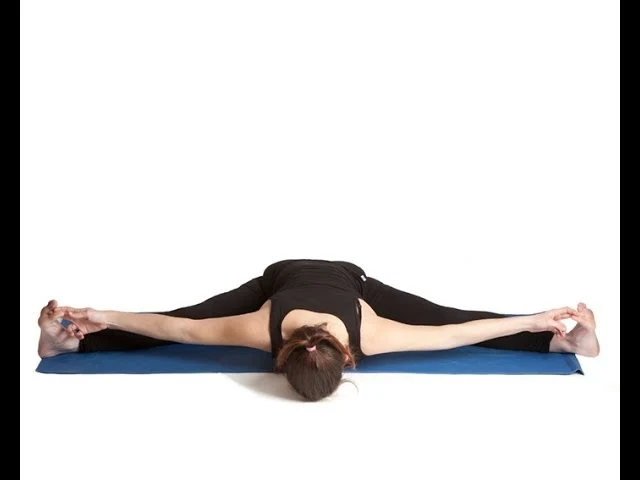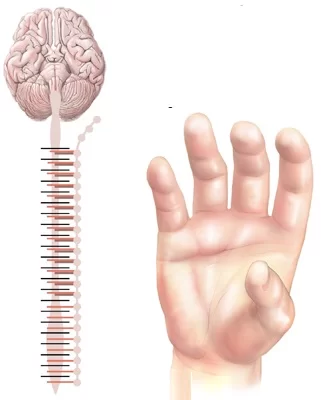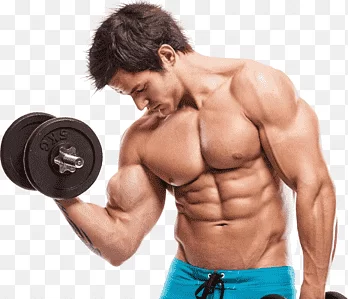Single-leg Deadlift
The single-leg deadlift is a popular exercise that targets the posterior chain muscles, including the hamstrings, glutes, and lower back. It is a variation of the traditional deadlift exercise but with an added balance and stability challenge.
One of the most focused, potent, and complete workouts that anyone can perform is the single-leg deadlift. It is essential for developing maximal strength and a fit spine and core. Several variations of this action suit different people and purposes. The deadlift is the dominant king of exercises and a fantastic complex exercise that works both the upper and lower body. Its power in the gym has spawned infinite variations, one of which is the single-leg deadlift, This is also called the one-leg deadlift, it is an amazing unilateral move that trains the whole lower body, especially the posterior chain. It creates strength and muscle, but its uses don’t end there! We could talk about how beautiful it is indefinitely.
What Is A Single Leg Deadlift?
A single-leg deadlift one leg, making it a true unilateral lower-limb exercise. A unilateral exercise is completed one side at a time. This permits you to determine muscular imbalances as well as enhance your balance and athleticism.
What Muscles Does The Single Leg Deadlift Work?
The single-leg deadlift works the muscles in the posterior chain while also working the upper and lower limbs. Here is a closer look at the muscles performed.
Hamstrings:
The hamstrings are one of the immediate muscles for this exercise. This muscle group, which has the biceps femoris (both long and short head), semitendinosus, and semimembranosus, crosses both the knee joint and hip joint. This suggests that their activities include flexing the knee joint and extending the hip. The hamstrings support the glutes and pull the hips forward during a single-leg deadlift, making it an excellent hamstring workout
Upper Back:
While the single-leg deadlift focuses mostly on the lower limbs, it also activates portions of the upper limbs, particularly the back muscles. By concentrating on pulling your shoulders back together, your back muscles are activated.
Your back muscles, particularly your scapular muscles (also known as your traps), are heavily utilized during the single-leg deadlift. While that is uncommon, you could even add this move to your back training.
Core (Including Lower Back & Abs):
If you speak about “core muscles”, individuals tend to mean abs. While this is correct, the core also contains the obliques and lower back (some even consider the whole torso as the core).
Together, these muscles tighten to induce stiffness and rigidness of the spine to cover the organs and skeleton. During the single-leg deadlift, these muscles must keep the torso from rotating.
Glutes:
The glutes, along with the hamstrings, are the direct muscles used in a deadlift workout pattern. While there is some knee flexion (pointing quad work), this is especially hip extension.
These are the numerous powerful muscles in the human body and are interested in basically every action that takes place in the lower body. In this exercise of single-leg deadlift, the gluteus medius has the main activation as it is the muscle accountable for balancing on a single leg.
Benefits Of The Single Leg Deadlift:
As noted, the single-leg deadlift will improve muscular strength and make muscle mass. But several advantages go beyond improving your strength and muscle.
Here’s what else makes the single-leg deadlift great.
- The Single Leg Deadlift Works The Posterior Chain: The rear chain is made up of several muscles all linked jointly to stabilize the back and open the hips. The direct muscles are the glutes, hamstrings, and erector spinae, all of which are essential to overall health, human interpretation, and injury deterrence. A single-leg deadlift is a great option for teaching these muscles as it’s a true hip extension exercise, maybe even more so than a traditional deadlift.
- Unilateral Exercises Work One Leg At A Time: We have talked about this earlier but the single-leg deadlift’s emphasis on one leg at a time causes it very hard to return. The remaining advantages on this list are due to the activity’s one-sidedness.
- The One-Leg Deadlift Improves Balance: The balance part of the single-leg deadlift is one of the variables that make this campaign design special and necessary for any leg movement. all people require balance for sport and life.
- Deadlifts on one leg are beneficial for unilateral sports movements: Extremely few sports, or daily movement, take place on both legs, making unilateral exercise necessary. Bicycling, walking, and running are all unilateral motions. One step in a show of the difference. Although bilateral activities are necessary for maximum strength production, a single-leg workout will more closely resemble actual circumstances.
- You Can Use Lighter Weights: This may seem odd, as operating big weights is a service of a standard deadlift. But operating ultra-heavy weights isn’t always the most suitable choice. Studies have even indicated that lighter weights can forbid higher muscle activation¹. Some illustrations of when you’d want to use more delicate consequences are for rehab, various phases of periodization, deload weeks, and at-home activities (assuming you have some weights to use)².
Single Leg Deadlift Vs Conventional Deadlift
The deadlift’s movement and training variables are significantly changed when one leg is removed. Here we show their differences.
- Hypertrophy Vs Strength: The traditional deadlift is primarily strength training. While some will use advanced reps for deadlifts, most lifters stay beneath the 5-rep mark. Although it should be quite obvious that you would lift less weight during a one-leg deadlift, practitioners still prefer greater rep ranges (10-12). This places it in the exercise category for hypertrophy or muscle gain.
- Weight Used: It’s mostly thought that when you do a unilateral exercise, you can increase 50% of your bilateral counterpart. But that’s not the point. More weight than this can be raised when utilizing a single limb, we can state with a high degree of assurance given the amount of research that has been done on the subject. In other words, the linked load should be greater than the bilateral equivalent if you perform a single-leg deadlift on your left leg first, followed by your right leg. This was confirmed in a study that examined one-leg squats. Research showed that when glancing at the load of the barbell, a lifter’s single-leg squat performance was 42% of the back squat¹.
- However, when carrying the weight of the body, the single-leg version was 64%. In theory, this would total 128%.
- Hormonal Response: The body’s hormonal reaction to barbell exercises plays a crucial role in human development. One of the hormonal reactions is testosterone. Unexpectedly, research has revealed that using just one leg will result in equivalent improvements in this anabolic hormone. This is despite the smaller load. This is huge for anyone who can’t serve traditional bilateral leg exercises as you can maintain high testosterone levels with the unilateral variation.
Single Leg Deadlift Or Single Leg Romanian Deadlift?
- Which exercise does the Romanian deadlift most closely have in common the deadlift or the deadlift with one leg? There manages to be confused about what you’re doing when completing a single-leg deadlift.
- The truth is that there’s a grey area about which one it falls under. But generally speaking, a one-leg deadlift is more related to a Romanian deadlift (RDL) than anything else.
- You rarely see a person start the move from the bottom. Instead, similar to the RDL, lifters begin from a standing position. People can still descend lower at the precise moment, as observed during a conventional deadlift, even when there isn’t as much flexion in the knees.
- Further, people do a single-leg deadlift to enhance things like balance and hypertrophy, not power. With the RDL, this can be done more effectively.
- Also, keep in mind that standing on one leg will make your stabilizer muscles work harder but less steadily. As a result, you won’t be able to exercise as much force, meaning less weight is used.
- Something else to think about is that there are quite a few other single-leg movements. The skater squat, one of these, resembles a real single-leg deadlift.
Proper Form For The Single-Leg Deadlift:
We will go via several variations of the single-leg deadlift below. However, the major action for all of them is the same. First master the exercise routine, then increase the weights according to your capacity. The single-leg deadlift using two dumbbells will be the main focus of this how-to.
How to perform the Single Leg Deadlift?
To obtain the starting position, stand with feet hip-width apart, lean forward, and pick up two dumbbells, one in the hand.
- Stand up with the proper form, permitting your dumbbells to hang in front of your legs. Kick the opposite leg to the rear while keeping one leg straight on the ground. While your back leg does not need you to be in a straight line, holding it relatively comprehensively will greatly enhance your balance.
- With a Romanian deadlift, you will include a soft curve in your knee that is minimal and lives to allow the hips to be pushed back. Push your hips back and let your trunk lean forward by flexing at the knee. Again, have a slight flex in the knee and try to load the glutes and hamstrings as you lean ahead.
- Let your dumbbells hang naturally with your arms straight and fully extended, your palms confronting your legs. Keep your shoulders drawn back and your core tight during the whole movement.
- Continue to flex your trunk forward as much as you can. There is no clear point for your dumbbells to reach, but it should hit somewhere around mid-shin. When you sense that your form is ready to collapse, stop falling. Emphasis on “about” to break.
- Start pulling your weights upward by raising your hips. To do this, concentrate on driving your hips forward and pressing your glutes. Persist until your hips are fully extended. You will not stand on your booth legs until you finish the prescribed repetition on one leg.
- Repeat for the desired reps.

Single Leg Deadlift Variations For Beginners:
- There are several single-leg deadlift interpretations for lifters of all levels. Even if you are a strong deadlifter following a power lifting schedule, beginning with an easier version of the unilateral variation is still a fine idea. This is because serving the training on one leg is considerably different.
- In addition, it needs significantly more balance. Here are four variations perfect for any fitness group.
Elevated Rear Foot Single Leg Deadlift:
- This is not a Bulgarian split squat, but it is identical. You will extend your back leg back so it’s in a parallel position to the Bulgarian split squat.
- This means your leg is almost extended. It will then sit on a platform, step stool, or bench. The leg is working as help as objected to helping develop force.
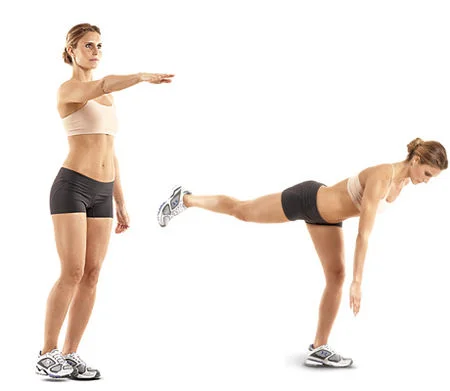
Single Leg Deadlift With Support:
- The rack squat, door, or wall are all examples of supports that could be used in the single-leg deadlift variation. Even how you use your support is up to you in a few ways.
- You can initiate practicing the movement and working on balance by utilizing a wall or chair to keep your posterior foot when you practice the single-leg deadlift movements, or You can complete the entire deadlift range of motion while holding onto a rack squat (or something similar) with one hand.
- As you progress with the exercise, your objective is to use smaller and less help.
Body Weight Single Leg Deadlift:
- Once your balance is good, you can do the activity with just your body weight.
- This is a fantastic way to master the movement and your balance before tossing weights into the mix.
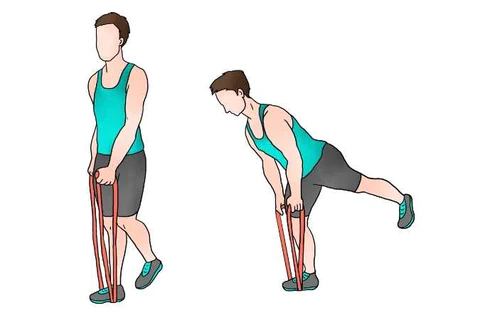
Single Leg Deadlift with Knee Drive and Resistance Band:
- Once you can perform the single-leg deadlift with no support, then it is time to start putting some challenges on your muscles. To start with, you can initiate with some resistance bands.
- This is a great progression to adapt to performing the single-leg deadlift with resistance. You can either connect the resistance band to something like a squat stand or put the band beneath your standing leg, grabbing the ends in your hands.
- Recall that this will pull your arms back barely when you bend forward.
- Then to also challenge your balance, once you have mastered this deviation, try counting a knee drive in at the end.
Advanced Single-Leg Deadlift Variations:
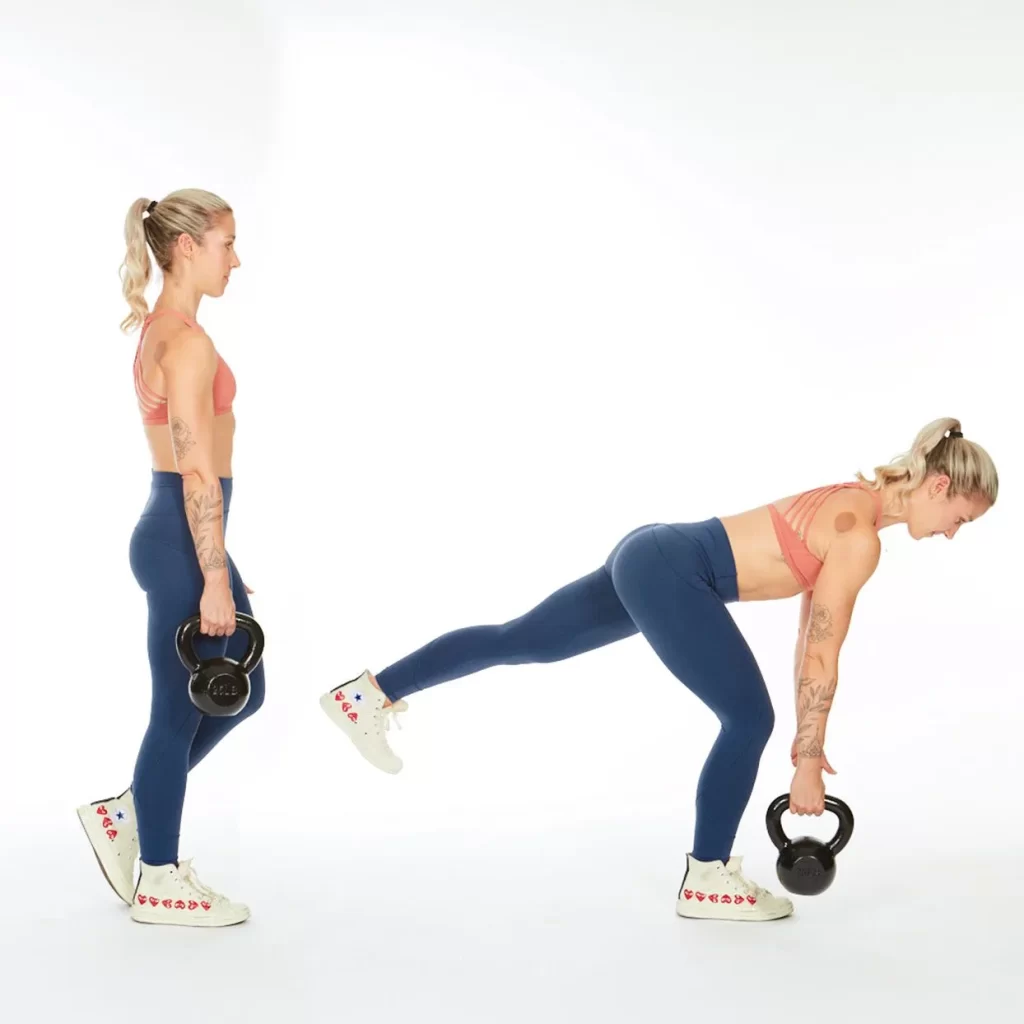
You can move through the overhead progressions fairly quickly, depending on your fitness level. When prepared, move on to the two dumbbell variation we are concerned about above, or one of these options.
Single Leg Deadlift With Kettlebell:
- Utilizing a kettlebell might be our favorite way as the grip is easier to hold due to the weight being below your hand. If you like to use a single kettlebell, you will have it in the same side hand as your standing leg. For example, if your right leg is placed, you will hold the kettlebell in your right hand.
- When the left leg is planted, hold it in your left hand. For two kettlebells, grab one in both hands.
- The kettlebell should come down in a straight line in any variation, balanced precisely like your feet. You can also use pair of dumbbells in place of a kettlebell.
Barbell Single Leg Deadlift:
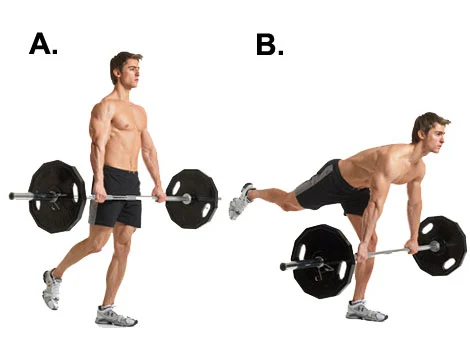
This is a progressive single-leg deadlift. While not visited often, you can use a barbell, but we only suggest it for professional lifters. Also, the barbell deadlift is the best version where you could try jumping from the floor.
The single-leg deadlift is a need for every training program.
- Not adequately individuals are achieving single-leg movements. But, now you can.
- The single-leg Romanian deadlift provides an excellent balance of challenge, ease of movement, and effectiveness, making it a great exercise to strengthen leg muscles. This is why it is incorporated into workouts for athletes and lifters of all stages and experience levels.
- The one-leg deadlift is excellent for muscle hypertrophy and when light weights and high repetitions are used, it can be used for muscular persistence as well.
- We strongly advise adding the single-leg deadlift to your health regimen if it doesn’t already contain any unilateral exercise. That is presuming, as we are assuming, that you want to maximize your training.
Common Mistakes & Form Tips:
Getting this move is important to gain all of its possible benefits. Use these three suggestions to provide you’re performing it perfectly.
- Because you stand on only a single leg, most individuals can get lower while keeping the right form. But even though you can get lower, you still require to keep your trunk straight! Do not turn your body just to get your dumbbell lower. This would not provide any additional benefit and will increase your risk of injury.
- Do not flex your knee more to permit greater depth, as that ruins the point of the exercise. Your focus is to load the posterior muscles, not go as quiet as you can. Therefore, we want to emphasize a small flexed one more time.
- The range of movement will be greater when using one leg. If you can get your trunk parallel to the ground, go for it as long as you don’t offer form.
FAQs
Does the single-leg deadlift need the use of weights?
Depending on your strength and coordination, do not necessarily use weight always. For some gymgoers, even the open bar alone is strongly restorative. Over time and as your competence improves, you may like to begin piling plates onto your barbell to constantly drive progress.
Are single-leg deadlifts harmful to my trunk?
No exercise is inherently dangerous. It is all about how you load it and whether or not the steps are tolerable. Your spinal erectors will be worked somewhat during a single-leg deadlift, but there should be a clear distinction between muscular exhaustion and actual discomfort. If you feel discomfort, seek out a separate action.
What are single-leg deadlifts good for?
The glutes, hamstrings, lower back, and core strength are all helped with the single-leg deadlift. Your equilibrium and motor skills will also be enhanced with this exercise.
Can single-leg deadlifts develop glutes?
Squats may be one of the most popular lower-body workouts, but single-leg exercises are just as effective for balancing muscle imbalances and targeting your glutes and legs separately.
Which deadlift is most suitable for beginners?
The Best Deadlift Exercise
For beginners, the best place to start is with the Romanian deadlift. The next stage is the trap or hex bar deadlift. The structure of the bar and high handles allow you to master deadlift form while minimizing motion demands and injury risk.
Why do people avoid deadlifts exercise?
The deadlift might cause excessive strain on your lower back and result in a slip-disc or fracture because it is a full-body, hard workout. While dealing with some health concerns, it is better to avoid less intense exercise to avoid worsening pain.
Is dead lifting every day bad?
Yes, it is possible to deadlift frequently without getting hurt while also gaining strength. As shown here. It takes a lot of practice to develop and perfect the technique of dead lifting, which is more than just a demonstration of sheer power. As such, it’s a movement that can be performed daily to keep that pattern sharp

